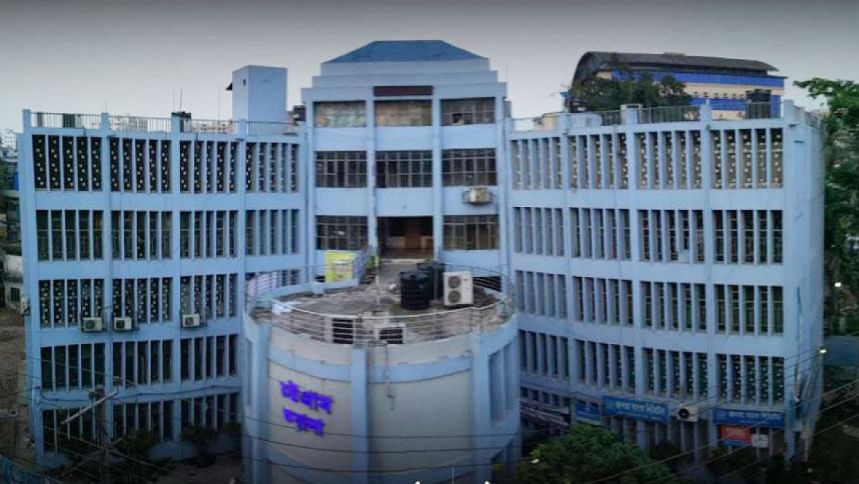Port city: Water crisis grips residents amid rising salinity

As Bangladesh confronts an escalating water crisis, the struggle for safe drinking water is becoming increasingly dire—both in urban centres and remote villages. In Chattogram, rising salinity has rendered water sources undrinkable, leaving residents scrambling for alternatives. Meanwhile, in the hills of Bandarban, villagers endure perilous climbs and hours-long waits for a single jar of water. In Khulna, families from coastal areas have to buy drinking water. These challenges are not isolated incidents but warning signs of a broader crisis that could threaten millions in the years ahead. On this World Water Day, we spotlight harsh realities faced by communities across the country and the urgent need for sustainable solutions.
For the past two weeks, residents of Chattogram have been grappling with an acute crisis of drinkable water as rising salinity levels in the supply have made it virtually undrinkable.
The issue stems from the Halda River, where saline tidal water has intruded due to reduced upstream water flow, leading to an increase in salinity at Chattogram Wasa's main water treatment facility.
Despite efforts to blend water from other treatment plants before distribution, the problem persists.
Residents of several areas of the port city, including Patenga, Kattali, City Gate, Halishahar, Pahartali, and both sides of Zakir Hossain Road in Khulshi, have reported increased salinity in water supplied by CWasa.
"The Wasa water is very salty and undrinkable. I am compelled to collect water from a tubewell in the neighbourhood for daily use," said Kutub Uddin Ahmed, a resident of Pahartali.
Sabina Rahman, a resident of Khulshi, said, "For the past 15 days, the Wasa water has been unusable. Despite filing complaints with Wasa officials, the problem remains unresolved."
Officials fear that without adequate rainfall, the crisis could deepen, leaving residents increasingly dependent on alternative sources.
Authorities are now pinning their hopes on the upcoming monsoon to bring relief.
Anwar Pasha, managing director of CWasa, told The Daily Star that the Power Development Board (PDB) has scaled down water release from Kaptai Lake, leading to a decrease in the Halda River's freshwater flow. This has allowed saline tidal water from the Karnaphuli River to enter the Halda, significantly raising the salinity levels of the water treated at the Mohra Water Treatment Plant.
CWasa collects water from the Mohra point of the Halda River during low tide, but even after purification, the salinity level of the supplied water remains at 250 mg/L -- far above the acceptable limit for drinking water.
To address the issue, authorities have started installing 54 deep tubewells across the city, but residents continue to struggle with the worsening crisis.
According to CWasa sources, the daily water demand in Chattogram city is 580 million litres. Currently, around 460 to 470 million litres of water are being supplied from CWasa's four water treatment plants. However, the quantity of water collected from the Mohra point has decreased due to rising salinity, resulting in a shortfall of 30 million litres daily.
"The current salinity level at the Mohra water collection point is 2,100 mg/L, whereas, during normal times, it ranges from just 100 to 300 mg/L. During high tide, water collection is stopped, causing disruptions in the water supply system," said CWasa chief engineer Maksud Alam.
"We are trying to reduce salinity by blending water from other treatment plants with the processed water from the Mohra project," he added.
Md Humayun Kabir Majumder, chief engineer (distribution) of PDB, Chattogram Region, said power generation at the Kaptai Hydropower Plant has been reduced since November due to a decline in the lake's water level. Currently, only one unit is operational.
"If the reduced water release from Kaptai Lake was causing salinity in the Halda River, the problem should have arisen back in November. However, there was no intrusion of saline water at that time," he claimed.
Maksud Alam, however, mentioned that the water supplied by CWasa is treated in accordance with WHO guidelines, making it completely germ-free, but they cannot reduce the salinity level.
In future projects, efforts will be made to ensure both germ-free and salinity-free water, he added.
Dr Idris Ali, former professor of chemistry at Chattogram Government College and a researcher on Karnaphuli River's water, said a salinity level of 250 mg/L or more is harmful to the human body, especially among children, the elderly, pregnant women, diabetic patients, and those with high blood pressure.
Additionally, people with weak immune systems may face further health issues from saline water, including digestive problems, he said.
He criticised CWasa for failing to learn from past experiences, as saline water intrusion in the Halda River during the dry season is a recurring problem, and stressed the need for preventive measures beforehand.

 For all latest news, follow The Daily Star's Google News channel.
For all latest news, follow The Daily Star's Google News channel. 



Comments